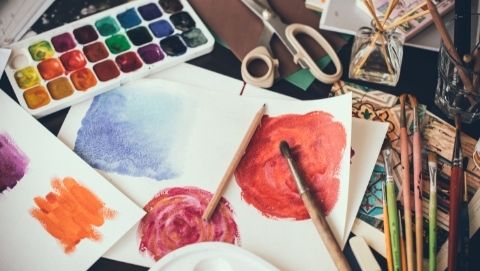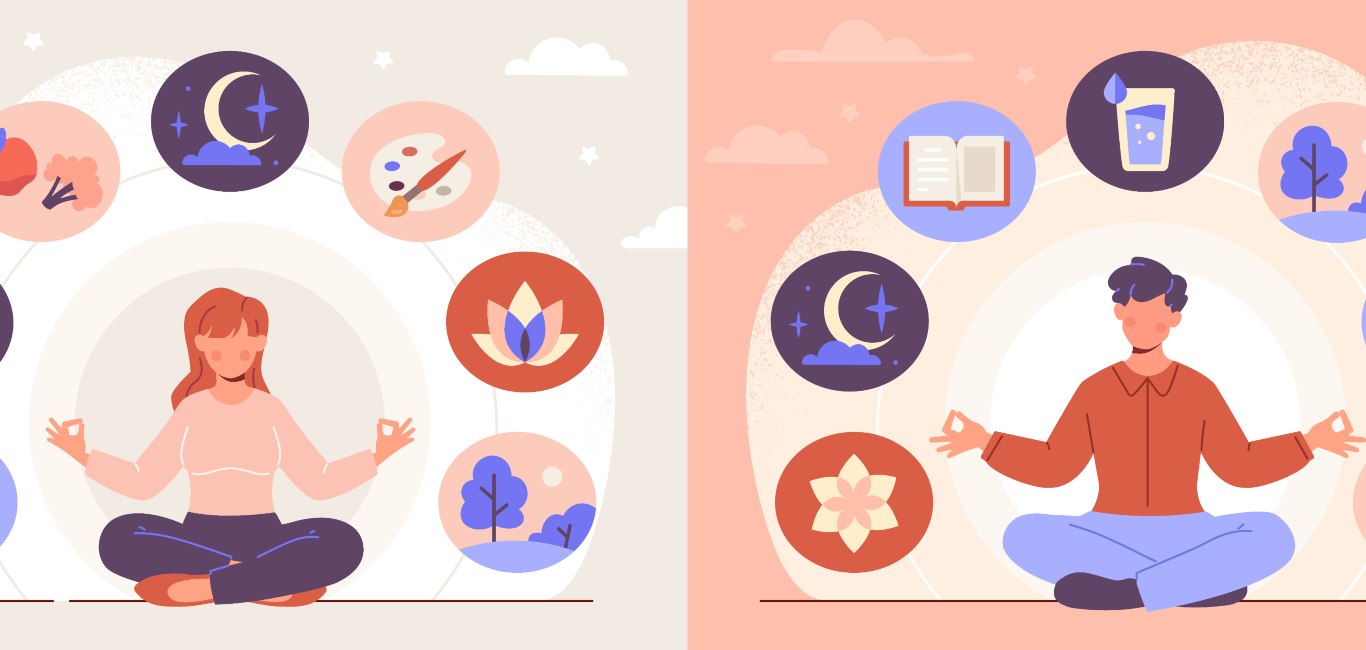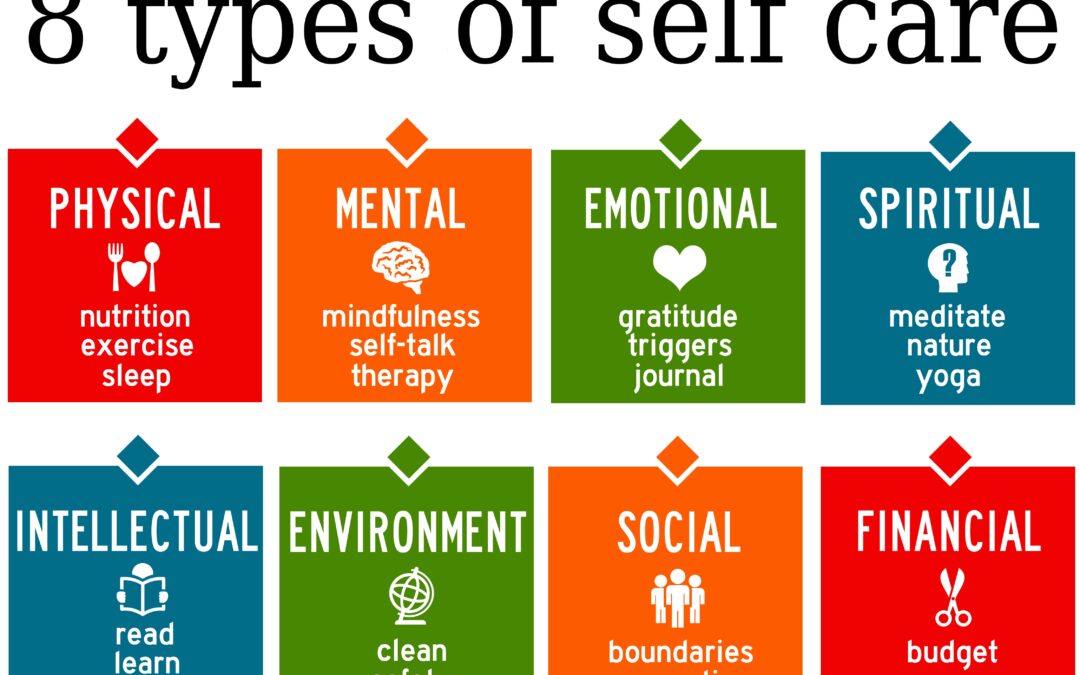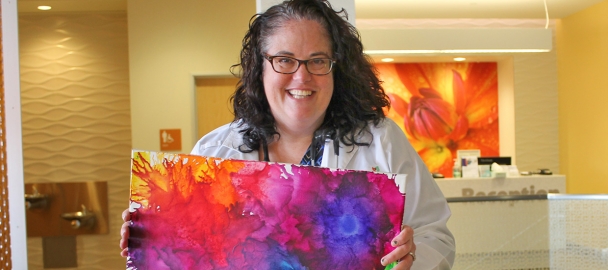
Introduction
The Connection Between Hobbies and Emotional Health
Hobbies play a vital role in shaping emotional health and overall well-being. Research indicates that activities unrelated to work can significantly elevate mood and contribute to mental health. For instance, engaging in creative pursuits like crafting not only provides an outlet for self-expression but also fosters a profound sense of happiness and accomplishment.
Take the story of a grandmother who finds joy in knitting. Her vibrant creations, ranging from colorful scarves to cozy blankets, are not just gifts for others; they represent her passion and dedication. The rhythmic motion of her hands offers solace, distracting her from life’s stressors and contributing to her emotional balance. This personal story is a reminder of how hobbies such as knitting can nurture a sense of purpose and belonging.
Additionally, a study led by cognitive psychologist Dr. Helen Keyes suggests that engaging in creative activities can enhance well-being by providing meaningful avenues for self-expression. When we allow ourselves to indulge in hobbies, we create an opportunity for emotional release and personal growth, leading to an improved state of mind.
Benefits of Incorporating Crafting and Creativity into Daily Routine
Incorporating crafting into a daily routine can yield numerous benefits for mental and emotional health. Here are a few key advantages that individuals often experience:
- Stress Reduction: Engaging in creative activities such as painting, knitting, or sewing induces a state of flow, where individuals become fully engrossed in their projects. This not only diverts attention from stressors but also encourages relaxation and tranquility.
- Boosted Self-Esteem: Completing a craft project instills a sense of achievement and pride. Seeing a finished piece, whether it’s a handmade card or a beautiful painting, reinforces one’s skills and capabilities, boosting self-worth considerably.
- Enhanced Mindfulness: Crafting activities often require concentration and meticulous attention to detail. This focus helps individuals practice mindfulness, which in turn promotes mental clarity and emotional stability.
- Improved Social Connections: Engaging in crafting can lead to community bonding. Whether joining a knitting circle or sharing projects online, these social interactions foster relationships and provide emotional support.
- Cognitive Stimulation: Crafting engages the brain in critical thinking and problem-solving, improving cognitive abilities over time. From following patterns to experimenting with different techniques, these mental exercises enhance brain function.
Integrating crafting and creativity into daily life doesn’t have to be daunting. Start small—set aside a few minutes each day to explore various projects. Maybe you can join a local crafting class, or you might even start a crafting tradition with friends or family.
Ultimately, the transformative power of crafting lies in its ability to enrich emotional health and well-being. By embracing creativity, individuals can cultivate joy, connection, and purpose in their lives. So, why not pick up that paintbrush or knitting needle today? Embrace the joy of crafting and watch as it nurtures your emotional health!

Understanding Emotional Health
Importance of Emotional Well-Being
Emotional health is a cornerstone of our overall well-being. It encompasses our ability to manage emotions, cope with stress, maintain positive relationships, and make informed decisions. Just as physical health requires attention and care, so does emotional health. It shapes how we think, feel, and interact with the world.
Consider someone who finds solace in painting. Every brushstroke on the canvas becomes a form of therapy, allowing them to express emotions that words might fail to capture. This creative outlet fosters a deep sense of satisfaction and personal growth, reinforcing the idea that emotional well-being is paramount to leading a balanced life.
Moreover, emotional well-being leads to numerous benefits:
- Enhanced Relationships: Positive emotional health enables better communication and empathy, fostering deeper connections with those around us.
- Improved Resilience: Individuals with strong emotional health are better equipped to cope with life’s challenges, enabling them to bounce back from setbacks.
- Greater Satisfaction: When we prioritize emotional well-being, life’s everyday joys become more prominent; we appreciate the little things more deeply.
Ensuring emotional well-being allows individuals to thrive, both personally and professionally. As we invest in our emotional health, we create a profound ripple effect on our lives and the lives of those around us.
Impact of Stress and Anxiety on Mental Health
Unfortunately, stress and anxiety can significantly hinder emotional health. The pressures of daily life—work deadlines, family obligations, and social expectations—can create a continuous cycle of unease, burdening individuals with feelings of overwhelm and helplessness.
When these feelings accumulate, they can manifest as:
- Increased Cortisol Levels: Chronic stress leads to elevated cortisol levels in the body, which can contribute to various health issues, from high blood pressure to depression.
- Negative Thinking Patterns: Anxiety can distort our perceptions, making it challenging to see the positive side of situations. This can lead to a cycle of destructive thoughts, reinforcing feelings of inadequacy.
- Withdrawn Behavior: Social isolation or disengagement from activities that once brought joy may occur as individuals seek to cope with their emotional turmoil.
A personal experience illustrates this. A friend, overwhelmed by work stress, stopped attending her painting classes. Over time, she noticed her mood plummeting and her engagement with friends dwindling. It was only when she recommitted to her craft that she began to experience the therapeutic benefits of creativity, helping alleviate some of her stress.
Managing stress through healthy outlets such as hobbies or social connections is essential. Research has shown that activities like crafting and participating in group hobbies can help lower cortisol levels and boost dopamine production—our body’s natural feel-good chemicals. These creative pursuits provide a pathway to reclaiming emotional well-being.
In conclusion, understanding and prioritizing emotional health is crucial for leading a fulfilling life. By recognizing the impacts of stress and anxiety, and incorporating activities that promote well-being, individuals can build resilience and a brighter outlook on life.

Therapeutic Value of Crafting
Stress-Relief Techniques through Crafting
Crafting is not just a pastime; it’s a powerful tool for reducing stress and enhancing overall mental health. Research has shown that engaging in various crafting activities can lead to a significant decrease in stress levels, thanks to their calming and meditative qualities. When you think of crafting, you might picture a quiet afternoon spent creating something beautiful—perhaps it’s knitting a scarf or painting a landscape. Inertia melts away as you immerse yourself in these activities.
One of the ways crafting helps combat stress is through the mental focus it requires. When you engage in a craft, your attention shifts entirely from the demands of daily life to the task at hand. This focus helps:
- Lower Stress Hormones: Crafting has been linked to reduced cortisol levels in the body, allowing for a more relaxed state of mind.
- Foster Mindfulness: Similar to meditation, crafting encourages individuals to be present in the moment. The very act of concentrating on colors, patterns, or textures can create a meditative state that calms the mind.
- Provide an Emotional Outlet: Creating art offers a means to express and release emotions. This can be especially valuable when coupled with feelings of anxiety or frustration, allowing you to channel these energies positively.
For example, imagine a friend who recently picked up watercolor painting after a stressful work week. As she brushes water over her canvas, she discovers a soothing rhythm; the worries of the day melt away, replaced by creativity and peace.
Boosting Mood and Self-Esteem with Creative Activities
The benefits of crafting extend beyond stress relief; they also play a vital role in boosting mood and enhancing self-esteem. Engaging in creative activities stimulates the brain’s release of dopamine, the neurotransmitter associated with pleasure and reward. This release can provide immediate feelings of happiness and fulfillment.
Some key benefits of crafting include:
- Improved Mood: Activities like painting or sewing can contribute to a more positive mindset, combatting feelings of anxiety or depression. The sense of satisfaction derived from completing a project can trigger an uplifting emotional response.
- Enhanced Self-Confidence: Crafting allows individuals to explore their creative potential. Successfully completing a project—whether it’s a handcrafted jewelry piece or a unique painting—fosters a sense of accomplishment. You’re not only creating something tangible but also reinforcing your capabilities.
- Opportunities for Growth: Each creative endeavor encourages skill development. As you learn and master new techniques, you gradually boost your confidence. For instance, someone who struggled with baking might find joy in perfecting a unique recipe, further contributing to their sense of achievement.
Reflecting on personal experiences, many people may recall times when they shared their creations, eliciting compliments and praise from friends and family. Each positive remark reinforces their self-esteem, creating a powerful cycle of affirmation and motivation.
In conclusion, the therapeutic value of crafting cannot be overstated. It serves as a multifaceted tool for stress relief and mood enhancement. By integrating creative activities into your life, you can enrich your mental well-being, one project at a time. So, why not pick up that craft you’ve always wanted to try? It may just be the key to unlocking a new realm of emotional satisfaction and joy.

Creativity as a Form of Self-Expression
Artistic Outlets for Emotional Release
Creativity serves as a powerful avenue for self-expression, allowing individuals to articulate emotions that may otherwise remain unspoken. The act of creating—whether through painting, writing, or crafting—can unlock feelings and thoughts, providing a therapeutic release.
Imagine stepping into a paint studio, where the vibrant colors vie for your attention. With each brushstroke, you channel your emotions onto the canvas, transforming feelings of sadness, joy, or anger into artistic expressions. The satisfaction derived from this process can be incredibly restorative. Here’s how creative outlets function as emotional release mechanisms:
- Handing Over Control: Engaging in a creative process can feel liberating. For instance, a young woman struggling with anxiety found solace in writing poetry. Each word became a cathartic release, allowing her to navigate through layers of anxiety and emerge with clarity.
- Expressing Complex Emotions: Crafting isn’t always about the final product. Sometimes, simply engaging in the tactile motions—like knitting or pottery—serves to calm the mind and channel emotions. For instance, the repetitive action of knitting may help a person manage feelings of stress, creating a soothing rhythm akin to meditation.
- Building an Emotional Vocabulary: Art may enable individuals to express feelings difficult to verbalize. Creative activities have the potential to articulate complex emotions, offering insights into personal experiences.
Thus, emotional release through the arts plays an invaluable role in maintaining mental health. Creative outlets transform chaos into beauty, providing clarity in a turbulent world.
Exploring Personal Identity through Creative Process
Creativity is also integral for exploring personal identity. As individuals engage in creative expression, they can reflect on their values, experiences, and aspirations. This process of creation often leads to a deeper understanding of oneself.
- Self-Discovery and Reflection: The act of writing, for example, prompts introspection. A participant in a creative writing workshop discovered newfound insights about her past relationships and how they shaped her today. By crafting stories, she unearthed elements of her identity that had long been buried.
- Cultural Expression: Many turn to artistic endeavors as a way to celebrate their heritage. A friend who creates traditional crafts feels a connection to her roots through the art forms passed down generations. Each piece carries stories and emotions, forging a link between past and present.
- Confidence and Empowerment: Engagement in creative practices can bolster self-esteem. Completing a project—be it a painting, a knitted scarf, or a short story—instills a sense of achievement. This confidence can empower individuals to explore uncharted territories of self-exploration and build resilience through the creative process.
In conclusion, creativity is more than just an escape; it is a means of self-discovery and an avenue for emotional release. By embracing the artistic journey, individuals can delve into their emotions, explore their identities, and ultimately enhance their mental health. The invitation to create is open to all—each stroke, note, or crafted piece becomes a testament to who we are. So why not dive in? Your next masterpiece awaits!

Social Connection and Support
Building Relationships through Shared Hobbies
Hobbies create a fantastic opportunity for social connectivity, allowing individuals to foster relationships and build a sense of community. Whether participating in group activities or simply sharing interests with others, engaging in hobbies cultivates bonds that can significantly enhance mental health and overall well-being.
Consider a local knitting circle. Participants gather weekly to share tips, laughter, and, of course, progress on their latest projects. Newcomers quickly find themselves welcomed into the fold, and as they engage in crafting, they share stories and experiences, deepening their connections. Here are a few ways shared hobbies build relationships:
- Fostering A Sense of Belonging: Engaging in group hobbies, whether it’s a book club, a hiking group, or a gardening team, introduces opportunities for meaningful interactions. The shared interests create a common ground, making it easier to break the ice and connect with others.
- Combating Loneliness: Hobbies help reduce feelings of isolation, a common contributor to various mental health challenges. As individuals engage in these activities with like-minded people, they reinforce feelings of inclusion and friendship, creating emotional security.
- Networking Opportunities: Hobbies can also expand personal and professional networks. Participating in a pottery class might lead to connections with local artists or even potential collaboration on projects. The networks formed around hobbies can introduce new career paths or personal growth opportunities.
For example, a friend of mine joined a local running club after moving to a new city. The camaraderie she found not only improved her fitness level but also led to long-lasting friendships—people she now considers family.
Joining Crafting Communities for Emotional Support
Crafting communities offer a unique platform for emotional support that many individuals may overlook. These groups create safe spaces for participants to express themselves, share struggles, and celebrate successes together, all while pursuing their creative passions.
- Creating Safe Spaces: In today’s fast-paced world, having a supportive environment where individuals can be vulnerable is invaluable. Crafting groups often become spaces where members can discuss their feelings and share personal stories without fear of judgment. This emotional sharing can cultivate a deeper sense of connection and understanding among participants.
- Providing Motivation and Encouragement: When you see others creating beautiful pieces or making progress in their projects, it can inspire you to push through your own challenges. The encouragement from peers can motivate you to try new things or step outside your comfort zone, leading to personal growth.
- Access to Resources and Knowledge: Being part of a community often provides access to knowledge and resources that can broaden individuals’ horizons. For instance, an online crafting forum might offer tutorials, tips, or advice on specific techniques that can enhance one’s crafting journey. This collective wisdom can be empowering and uplifting.
In conclusion, the social connections built through hobbies and communities can greatly enhance mental health. By engaging with others who share similar interests, individuals can combat loneliness, find emotional support, and foster meaningful friendships. So whether it’s joining a local knitting group or participating in an online art forum, consider embracing these social opportunities—they could be the key to not just improving your craft but also enriching your life!

Mindfulness and Relaxation Techniques
Practicing Mindful Crafting for Mental Clarity
Mindfulness is a practice that encourages individuals to be fully present in the moment, and it can significantly enhance the crafting process. Mindful crafting involves engaging in creative activities with intention and awareness, allowing individuals to cultivate mental clarity and emotional calm.
Imagine sitting down with a blank canvas and a palette of vibrant colors. Instead of rushing to finish a painting, you choose to focus on the feel of the brush against the canvas, the way the colors blend, and the scent of the paint. This immersive experience can evoke a state of flow—a psychological concept where one becomes completely absorbed in an activity. Here’s how to practice mindful crafting:
- Set Your Intention: Before starting your craft, take a moment to ground yourself. Set a simple intention, like finding joy in the process rather than focusing on the outcome. This practice can shift your perspective on creativity, allowing you to appreciate it as a journey rather than a destination.
- Focus on Your Senses: Engage all your senses while crafting. Feel the texture of the materials, listen to the sounds of your environment, and observe the shapes and colors that come to life through your hands. This heightened awareness redirects focus from stressors to the present moment, enhancing mental clarity.
- Breathe and Reflect: Every so often, pause to take a few deep breaths. This not only helps center your mind but also promotes relaxation. Reflect on your thoughts and feelings as you create, allowing your emotions to flow freely and be expressed through your art.
Practicing mindful crafting can lead to reduced stress and an enhanced sense of accomplishment. It transforms creative activities into calming rituals, providing a much-needed sanctuary from the chaos of daily life.
Incorporating Relaxation Exercises into Creative Practices
In addition to mindful crafting, integrating relaxation exercises into creative practices can further enhance mental well-being. It’s beneficial to combine creative activities with techniques that promote relaxation, ensuring the mind and body remain balanced.
Consider the following techniques to incorporate relaxation into your creative practices:
- Progressive Muscle Relaxation: As you settle into your crafting session, take a moment to practice progressive muscle relaxation. Start at your toes and work your way up, consciously relaxing each muscle group as you go. This technique reduces tension and prepares your body for a creative flow.
- Mindful Breathing: Pair your crafting tasks with mindful breathing. For every few minutes of crafting, take a moment to close your eyes and focus on your breath. Inhale deeply through your nose, hold for a moment, then exhale slowly through your mouth. This practice fosters relaxation and keeps stress levels in check.
- Create a Calm Environment: Set the stage for relaxation by creating a tranquil crafting space. Soft lighting, soothing music, or natural sounds can enhance the atmosphere and make your practice even more enjoyable.
- Journaling Before Crafting: Spend a few minutes journaling your thoughts or feelings before you begin creating. This exercise helps declutter your mind, making space for creativity while providing insight into your emotions.
In conclusion, incorporating mindfulness and relaxation techniques into your crafting practice can transform how you engage with creativity. By being present and intentional, you create not just art, but also a safe haven for your mind and emotions. Explore these practices, and enjoy the profound impact they can have on both your creative journey and overall mental well-being. It’s time to embrace the serenity that comes through crafting!

Improving Cognitive Function
Stimulating Brain Activity through Creative Tasks
Engaging in creative activities is not just a means of self-expression; it’s a way to stimulate brain activity and enhance cognitive function. When we immerse ourselves in creativity, we encourage our minds to think divergently, building neural pathways and fortifying our brain’s overall health.
Consider the simple act of painting. As your brush meets the canvas, you’re not just creating art; you’re also involving various areas of your brain. For example:
- Visual Spatial Skills: Painting helps improve the ability to make sense of visual information—crucial for tasks ranging from navigation to interpretative reading.
- Fine Motor Skills: Activities like drawing or sculpting enhance hand-eye coordination, which is beneficial for daily tasks, from writing to typing.
- Memory Stimulation: Engaging in repetitive creative tasks can help strengthen memory. For instance, learning a new dance or a musical piece requires memorization, honing cognitive skills over time.
A personal story illustrates this point well. A woman I know took up pottery as a hobby. While shaping the clay, she noticed her increased focus and attention to detail—a delightful surprise that went beyond the satisfaction of creating beautiful pots. Pottery allowed her to break away from the frenetic pace of life, offering moments of concentration that sharpened her mental acuity.
Moreover, studies indicate that creative activities—be it crafting, painting, or playing musical instruments—can promote brain connectivity. This increased connectivity stimulates cognitive flexibility, which is essential for problem-solving and handling life’s mental demands.
Enhancing Problem-Solving Skills with Crafting Activities
Crafting is particularly valuable for enhancing problem-solving skills, as it demands a blend of creativity, critical thinking, and practical skill application. When individuals engage in creative projects, they frequently encounter challenges that require innovative solutions.
Here are several ways crafting nurtures problem-solving abilities:
- Adapting to Restrictions: Many crafting endeavors involve specific parameters—limited materials, for example. This encourages individuals to think creatively within constraints, cultivating resourcefulness. For instance, someone attempting to create artwork from recycled materials is prompted to rethink waste and find new uses, thus sharpening their problem-solving capabilities.
- Trial and Error: By experimenting with different techniques, crafters learn to embrace failure as part of the creative process. This mindset fosters resilience and enhances critical thinking skills. For example, a friend of mine who loves sewing often encounters design issues. Each time she faces a setback, she learns to assess the problem and come up with alternative solutions, eventually growing more confident in her abilities.
- Planning and Execution: Crafting activities often require planning and organization. Whether data from a knitting pattern or following a recipe, these activities reinforce logical sequencing, an essential aspect of effective problem-solving.
The beauty of creativity lies in its ability to engage both the mind and the hands. By immersing ourselves in crafts and artistic endeavors, we stimulate brain activity while sharpening our problem-solving skills.
In conclusion, integrating creative tasks into our daily lives can vastly improve cognitive function. By embracing artistic pursuits, individuals not only enrich their emotional well-being but also cultivate a sharper intellect capable of tackling new challenges. So, whether it’s drawing, crafting, or playing music, explore your creative side and watch as it enhances your thinking process—after all, creativity is an endless source of inspiration and growth!
